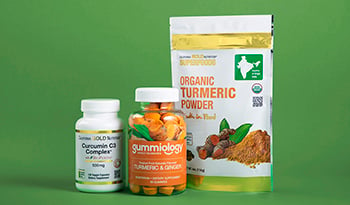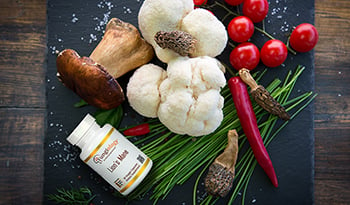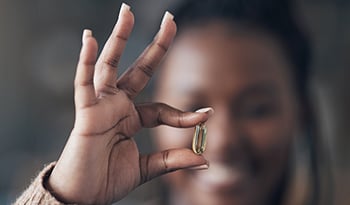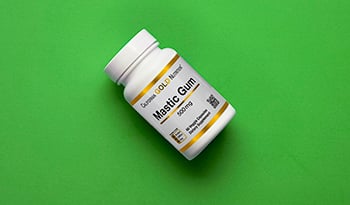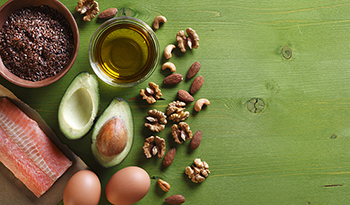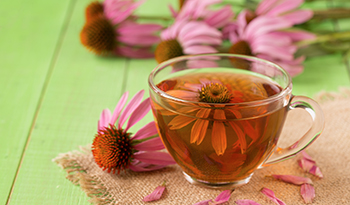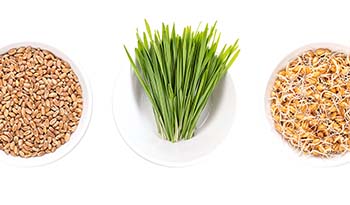How to Use Turmeric: Benefits, Joint Health, and Dosage
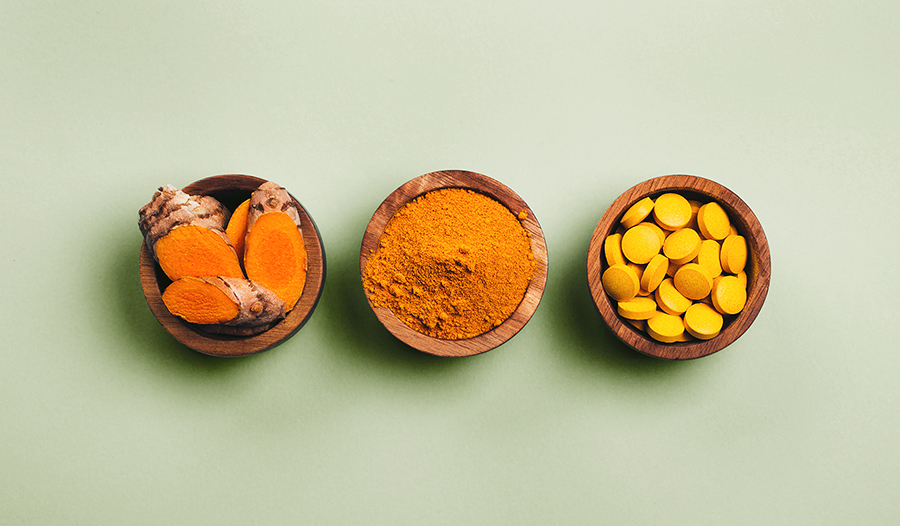
Humans have used turmeric for nearly 4,000 years. It has been used as a dye, cooking spice, and for medicinal purposes for millennia, with Sanskrit treatises of the spice’s use dating back to ancient India. The name turmeric has its origins in Latin from terra merita (meritorious earth), because of its golden color of the ground root. The spice comes from the Curcuma longa plant, a member of the ginger family. It is grown for the stem, which is dried and ground into the yellow powder with the bittersweet taste we know and love.
The main component in turmeric that has gathered attention is curcumin. This curcuminoid polyphenol has been reported to have medicinal properties, including helping in managing inflammatory conditions, degenerative eye diseases, and even metabolic syndrome. Polyphenols are plant metabolites designed to help the plant defend against UV rays, insects, bacteria, and even viruses. They contribute to the food’s bitterness, acidity, color, flavor, and oxidative ability.
What Are Polyphenols?
Polyphenols such as curcumin have gained popularity since epidemiological studies have repeatedly shown that a high polyphenol-rich diet may offer anti-inflammatory benefits. At the molecular level, polyphenols stabilize the oxidation reactions in cellular components. Oxidation reactions can lead to damages of organelles within the cell, one of them being the mitochondria, the cell’s powerhouse, where a lot of the cell’s energy is produced using the oxygen we breathe. Consumption of foods with antioxidant properties, like berries, nuts, healthy fats, and turmeric have been noted to help maintain levels of oxidative damage.
What are the Benefits of Curcumin?
Multiple review studies have shown that curcumin may help limit the markers of oxidative stress in the blood by influencing the activity of enzymes that neutralize free radicals. Inflammation is a complex set of reactions that occur in any tissue in response to irritating stimuli inside or outside that tissue. The goal is to protect the tissue and eliminate the initial cause of cell injury, but prolonged unregulated inflammation can lead to more tissue damage than expected.
To create this pathway, signaling molecules are made and released by cells, leading to a perpetual cycle of creating more inflammatory cells and molecules, which means more inflammation. In many studies, curcumin has been shown to block these cell signals, therefore maintaining the number of inflammatory proteins and cells. However, in many of these studies, researchers have found that curcumin has poor bioavailability. So, when ingested, it is poorly absorbed by the gastrointestinal tract, metabolizing and eliminating quickly from the body. Using curcumin in lecithin-rich foods, like eggs, vegetable oils, and buttermilk yogurts may help increase its absorption in the gut. Studies combining curcumin with piperine, a natural component of black pepper, have shown a 20-fold increase in the curcumin concentration since piperine slows curcumin’s metabolism.
What are the Consequences of Inflammation?
It is important to remember that inflammation is the body’s natural response to an irritant, and there are two types of inflammatory responses. The acute inflammatory response is short-lasting and it’s usually due to a momentary irritant, like bacteria, viruses, or injury. Yet, if the inflammation continues, the inflammatory response moves into its second stage. This stage is referred to as the chronic stage, and if left unchecked, can lead to various chronic conditions. Some of the signs of chronic inflammation can be nonspecific but may include joint pain, body aches, chronic fatigue, insomnia, decreased mood, and weight gain or weight loss.
Arthritis, more specifically osteoarthritis, has been linked to chronic inflammation. Several studies have shown improvement in knee joint pain with curcumin supplementation of 500 mg to 2 grams per day. Although these studies did not show that the inflammatory markers in the blood go down, it is thought that the findings were due to the inflammatory proteins residing within the joint space for arthritis. In one of the studies, it was noted that joint pain relief came on two hours after ingesting the curcumin supplement versus one hour for ibuprofen, a non-steroidal anti-inflammatory drug, the recommended medication for arthritis. The duration of curcumin supplementation ranged from 4 weeks to up to 12 weeks.
Metabolic syndrome, a predecessor to type 2 diabetes, is another condition that may be associated with inflammation, and it is composed of a constellation of symptoms including insulin resistance, elevated blood glucose levels, high blood pressure, elevated triglycerides, low HDL (“the good cholesterol”), elevated LDL (“the bad cholesterol”), and obesity. In many of the studies with curcumin and metabolic syndrome, curcumin has been shown to improve insulin sensitivity, reducing blood pressure and inflammatory markers. In one of these studies, 1 gram supplementation for a month showed a reduction in triglyceride levels, but no changes to cholesterol levels or body fat. Because inflammation, elevated triglycerides, and cholesterol have also been shown to increase the risk of cardiovascular disease, it is believed that curcumin supplementation may reduce this risk.
How to Take Curcumin
Curries containing turmeric, the natural spice, have a curcumin content that averages about 3% of the spice’s dry weight. Curry seasoning powders will have much lower levels of turmeric and, therefore, much lower levels of curcumin. Teas containing turmeric and other beverages like golden milk are other alternatives that you can consume to take advantage of curcumin’s anti-inflammatory properties. Similar to curries, the content of curcumin will vary.
Curcumin dietary supplements containing turmeric root extracts are another form of consuming curcumin. Labels will claim different percentages of the curcumin extract content. Independent quality control and quality assurance labs will test and inspect the products to validate these claims and may certify the labels if instructed by the product’s manufacturer. Some curcumin dietary supplement formulas will also contain other extracts, like black pepper extract (piperine) or proprietary blends containing vegetable gum, or other lipid formulations to try and increase the bioavailability of curcumin. Lastly, curcumin has also shown potential for serving as a topical agent within formulations of collagen films, emulsions, sponges, and bandages for promoting healthy skin.
Curcumin Supplement Dosage and Safety
Curcumin has been recognized as a safe compound by the United States Food and Drug Administration. The maximum recommended daily dose ranges from an intake of 3 mg/kg to 4–10 grams per day. To date, there is no evidence that demonstrates any long-term consequences of prolonged curcumin use, since most studies using the extract have ranged from 1–3 months. Although no serious adverse effects have been reported with the use of curcumin, some of the side effects may include diarrhea, headache, rash, and yellow stool.
If you are taking medications, consult with your doctors if you are considering starting curcumin supplementation. In vitro studies have shown curcumin to increase the risk of bleeding on patients who are already taking blood thinners, so you must speak with your doctors about any possible drug interactions or concerns. Contact allergies to curcumin powder, such as itching or rashes after immediate contact have also been reported. If you experience any of these symptoms, discontinue use immediately. Most importantly, if you experience any wheezing, shortness of breath, difficulty swallowing, or swelling of the lips, stop the use of any of the products containing curcumin and call your local emergency services immediately.
Overall, curcumin has shown great potential as an alternative substance and may help maintain healthy function. It’s a great spice that adds a refreshing flavor profile and color to food, particularly chicken and vegetables. Combined with berries, lean meats, and healthy fats, your diet will be full of polyphenols.
Remember, if you choose to start taking any dietary supplement, always consult with your doctors, and be sure to read the product label to determine the amount of curcumin that you’ll be consuming.
References:
- Biswas, S.; Does the Interdependence between Oxidative Stress and Inflammation Explain the Antioxidant Paradox? Oxid Med Cell Longev. 2016. doi: 10.1155/2016/5698931. Epub 2016 Jan 5.
- Carlsen, M., Halvorsen, B., Holte, K., et al.; The total antioxidant content of more than 3100 foods, beverages, spices, herbs and supplements used worldwide. Nutr J, 2010. 9: p. 3.
- Chaudhari, S., Tam, A., Barr, J.; Curcumin: A Contact Allergen. J Clin Aesthet Dermatol, 2015. 8(11): p. 43-48.
- Dei Cas, M., Ghidoni, R.; Dietary Curcumin: Correlation between bioavailability and health potential. Nutrients, 2019. 11(9): p. 2147.
- Hewlings, S., Kalman, D.; Curcumin: A Review of Its’ Effects on Human Health. Foods, 2017. 6(10): p. 92.
- Higdon, J., Drake, V., Delage, B., Howells, B.; Curcumin. Oregon State University. Linus Pauling Institute. Micronutrient Information Center. Webpage. 2016. Accessed 04/19/2020.
- Kunnumakkara, A., Sailo, B., Banik, K., et al.; Chronic diseases, inflammation, and spices: how are they linked? J Transl Med, 2018. 16(1) p. 14.
- Kunnumakkara, A., Bordoloi, D., Padmavathi, et al.; Curcumin, the golden nutraceutical: multitargeting for multiple chronic diseases. Br J Pharmacol. 2017. June;174(11):1325-1348. doi: 10.1111/bph.13621. Epub 2017 June.
- Pahwa, R., Goyal, A., Bansal, P., et al.; Chronic Inflammation. In: StatPearls Webpage. 2020; Accessed 4/19/2020.
- Pandey, K., Rizvi, S.; Plant polyphenols as dietary antioxidants in human health and disease. Oxid Med Cell Longev, 2009. 2(5): p. 270-278.
- Prasad, S., Aggarwal, B.; Turmeric, the Golden Spice: From Traditional Medicine to Modern Medicine. In: Benzie IFF, Wachtel-Galor S, editors. Herbal Medicine: Biomolecular and Clinical Aspects. 2011; Accessed 4/19/2020.
- Sahebkar, A., Serban, M., Ursoniu, S., Banach, M.; Effect of curcuminoids on oxidative stress: A systematic review and meta-analysis of randomized controlled trials. Journal of Functional Foods, 2015. 18(B): p. 898-909.
- Skiba, M., Luis, P., Alfafara, C., Billheimer, D., Schneider, C., Funk, J.; Curcuminoid Content and Safety-Related Markers of Quality of Turmeric Dietary Supplements Sold in an Urban Retail Marketplace in the United States. Mol Nutr Food Res. 2018. May;29:e1800143. doi: 10.1002/mnfr.201800143. Epub 2018 May.
- Tayyem, R., Heath, D., Al-Delaimy, W., Rock, C.; Curcumin content of turmeric and curry powders. Nutr Cancer, 2006. 55(2): p. 126–131.
- Vollono, L., Falcon,i M., Gaziano, R., Iacovelli, F., Dika, E., Terracciano, C., et al.; Potential of Curcumin in Skin Disorders. Nutrients. 2019. 11(9): p. 2169.
DISCLAIMER:This Wellness Hub does not intend to provide diagnosis...













































































 Table of Contents
Table of Contents



